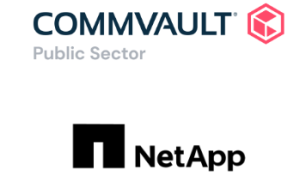Migrating to the cloud has a way of messing with agencies’ expectations.
Agencies often anticipate running into challenges with some issues, such as security and access management, that prove to be fairly straightforward, while other issues, such as data protection and total cost of ownership, turn out to be more complex than expected.
During a recent GovLoop online training, titled “Myth Busters: Addressing Common Cloud Misconceptions,” speakers from government and industry shared the lessons that they have learned with cloud migration in recent years. Here’s what they highlighted.
Don’t Assume Cloud Is the Best Solution
While it’s tempting to consider the cloud a catch-all solution for improving processes and efficiencies, that’s simply not the case. In fact, anecdotal evidence indicates that more than half of what gets moved to the cloud eventually returns to on premise resources. In some cases it’s a cost issue, and in others it’s about mission effectiveness.
“To make sure you’re using the cloud in ways that make the most sense, start with the mission,” said Chief Warrant Officer 5 Matt McDougall, Senior Signal Warrant Officer for the U.S. Army 18th Airborne Corps at Fort Bragg, North Carolina. “Understand what processes are required, and what data needs to be where, and then you can do the analysis based on your use cases, business model and business architecture.”
Technology comes second, agreed Richard Breakiron, Senior Director for Strategic Initiatives at Commvault.
“Look at the business and figure out your problem – tt might not even be a technological problem,” he said. “It could be a business process. I can remember many times when I was brought into a meeting at the Pentagon to solve a technical problem but it turned out to be a business process that automation wouldn’t help.”
To make it easier, agencies might look for a cloud optimization tool, which can help them determine are the best candidates for the cloud, and which might be more cost-efficient to keep on premises.
Take a Data-Centric Approach
Agencies understand that data is a strategic asset, but they often lose sight of that when making decisions about the cloud. But it’s all about the data. In a nutshell, it’s about knowing where data is located, protecting it effectively, and being able to access that data on demand to make decisions and conduct business.
To Breakiron, it’s a question of readiness.
“Readiness is a core mission; agencies need to be ready to respond to issues as they occur. And today, operational readiness means data readiness,” he said. The velocity, volume and variety agencies must deal with today requires extremely resilient platforms and partners that can meet requirements and adjust when requirements change.
Don’t Go It Alone
Cloud is a complex undertaking, and it’s easy to lose sight of critical issues in the process of migration if it’s not something you do for a living. So, it makes sense to turn to people who make a living at it. But even then, it must be a collaborative effort.
That’s because cloud has a shared services responsibility model. While a cloud service provider will take responsibility for the underlying infrastructure, the agency is still responsible for such issues as data protection and compliance and business processes.
Breakiron compared it to going to a hotel on a business trip. Hotel management will ensure you have a desk, internet connectivity, but “they won’t tell you how to dress in the morning, or how to get ready for your business meeting.”
Educate Your Users
There’s no way around it: Running workloads in the cloud is simply a different model from running them on-premises, and users across the organization need to understand that difference.
“Education is key, and that means educating everyone from technicians performing administrative actions to senior leaders,” McDougal said. Without understanding the intricacies of the cloud, it’s virtually impossible to avoid mistakes and ensure regulatory compliance.
Agencies are still coming to grips with how to best plan and manage an environment with dozens of variables that don’t exist in the data center, but that’s something that can be addressed with training, added Indira Donegan, Senior Strategist at NetApp. “People have to be prepared to take on the responsibility of managing workloads in the cloud efficiently and optimizing the cloud.”
But with the right mindset, training, technology and partners, agencies can reap the many benefit of cloud.
“At the end of the day it’s about making the outcomes better than what we have today,” McDougall said.
Sponsored by:






Leave a Reply
You must be logged in to post a comment.